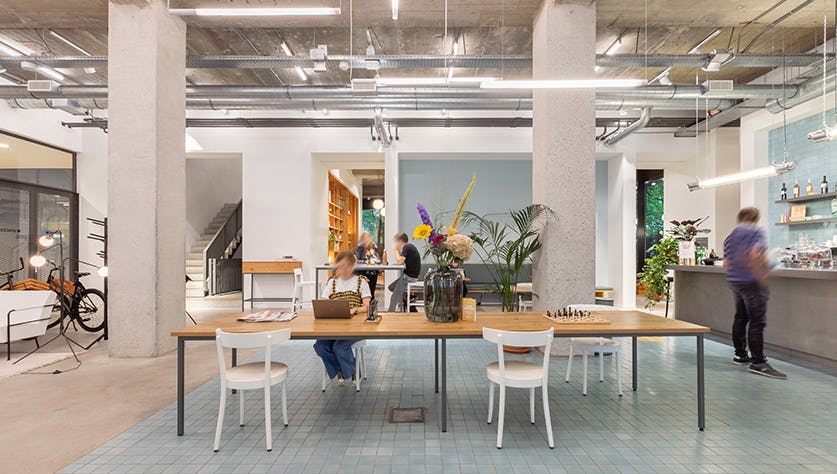
Maarten Jamin, Chief Design Officer of Spaces, shares his tips for building a positive workplace culture
After months of working from home, many of us are itching to get back to the cool, clean space of the office. We spend a third of our lives at work so where we power up each day should be more than a workspace. From meeting rooms to coworking areas, thinking pods to breakout rooms, a smart, well-designed office can inspire creativity, boost productivity and generate a positive work culture.
Steve Jobs once said: “Design is not just what it looks like, design is how it works.” And it’s true. Office design influences how we work, whether it’s light, airy and serene so we can focus or bright, colourful and fun to aid creativity. We speak to IWG’s Chief Design Officer Maarten Jamin to find out more.
Inspire creativity
“When we designed our first Spaces 12 years ago, the dream was that they’d all be different and unique. But we never envisaged we would be opening 150 locations in one year!” says Jamin. “We found that once we started to speed up and got other designers on board, we did not always get the quality we were after. So, we created a design guide that covers 80% of what designers needs to do, which frees up a lot of time for them to make the design suit the building. Now each site has its own identity, but it takes it from the building, the surroundings and the people visiting it.”
Boost brand identity
Our physical workspace plays an important role in a company’s brand identity. In the movies, expensive family lawyers always sit behind polished walnut desks, while trendy advertising creatives bounce around on space hoppers. Your workspace should reflect your company culture.
“Spaces is as strong a brand as Apple. There’s no Chinese Apple or European Apple, there’s just one Apple with a brand identity secure enough for everybody to appreciate it,” says Jamin. “It’s the identity of Spaces that people buy into: the community feel, the connection we have between the different cities and countries. Our brand identity is a very strong asset for us.”
A home-from-home experience
There are more than 425 Spaces across the globe and everyone who walks into a property from Amsterdam to Auckland is greeted by a sign that says ‘Welcome Home. Oops, we meant welcome to work.’ “We’re really trying to create something that’s homey and safe. As a member you can visit Spaces all over the world and you know exactly what you’re going to get, which is comforting,” says Jamin. “But it’s the energy of the other users that makes a Spaces environment so positive. Our community managers are there to connect those users together and create a synergy between them, and that’s something unique to the flexible workspace environment.”
A sense of security
“A year ago I would have said homeyness or personalisation is the most important factor of office design, now I would now say it’s security,” says Jamin. “While data security is a given, I would also include physical security, especially in the current climate. Security is integrated into all our designs. We are very careful about how we position desks and seats in order for our clients to feel safe.”
The Covid-19 pandemic has rocked the world, but there have been some positives that have come out of the crisis, largely a better work/life balance for many. “For a lot of people, working from home gave them an hour and half back of their life, as they no longer have to commute,” says Jamin. “The key is looking into helping people with work-from-home solutions, special furniture, specific services but mostly providing a professional working environment close to home. I mean, you can only work in Starbucks so often!”
Find out how Spaces can benefit your company culture
Share this article
 Read now How to stay connected with colleagues during lockdown
Read now How to stay connected with colleagues during lockdown
 Read now Five reasons to highlight remote working on your CV
Read now Five reasons to highlight remote working on your CV